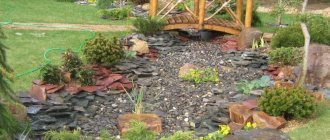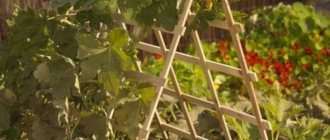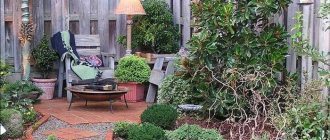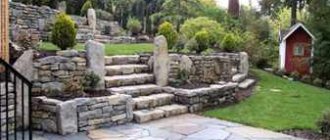Many designs have been invented and developed for arranging a garden. Thanks to them, plants receive everything they need for full development and rapid growth. Such structures include a trellis, which, with its simplicity, but at the same time unusualness, can radically change the entire appearance of the site. A do-it-yourself trellis is a completely feasible task for both male and female hands. It is enough to choose the desired shape, collect the material with tools and spend half a day creating a support for climbing flowers, vegetables or grapes.
How to properly secure (tie) blackberries to a trellis or other structure
After building the support, you need to learn how to tie up plants correctly. Regardless of whether a support, stand or trellis is used to support the branches, care must be taken to ensure that the material with which they will be attached to the frame is natural and does not damage plant tissue. To do this, you can use old nylon tights, cutting them into strips, or regular cotton fabric.
Video: blackberry garter on a trellis
Each two-year-old shoot is tied to one side of the support, and one-year-old shoots are tied to the other. They begin to attach the branches to a trellis (another structure) when they reach a height of 50 cm. To do this, wrap a strip of fabric around the branch in a ring, and then put the two free ends behind the wire and tie it. Thus, a figure-eight fastening is obtained, which avoids friction of the branch on the twine or wire. Instead of fabric, you can use special plastic fasteners in the form of the number “8”. Such a device is attached to the wire with one ring, and to the branch with the second.
Lattice gazebos: a variety of shapes and patterns
There are dozens of ways to beautifully decorate a gazebo using a lattice. Moreover, you can come up with your own design. We told you about the technology for making the simplest design, but there are other decor options!
For example, diamonds can be made double or the slats can be placed in the middle of the frames more often than at the edges. An option is possible when the skin is made of slats with cut teeth. Looks aesthetically pleasing and original!
As for the shape, rectangular and square are not the limit. How do you like the top of the grille to be broken or curved instead of the traditional straight shape? As for slatted cornices, they are often made in the form of an arch.
Decorative techniques: ideas
Diagonal gratings, which are often found on wooden gazebos, give an original and stylish look. Most often, a tilt angle of 45 degrees is used, the slats intersect each other at right angles. Only the pitch of individual elements can differ. If it is frequent and does not exceed 10–15 cm, then a fairly dense screen is created that provides excellent protection from the sun and allows you to hide the interior. A wider spacing of slats of 15 - 25 cm can create an atmosphere of lightness and openness, then the interior of the gazebo practically merges with the surrounding landscape.
The direct arrangement of intersecting slats will look even more original; you can combine them with inclined ones, for example, on adjacent walls. Such structures can also be very successfully used to support climbing plants, then instead of walls the gazebo will have a real hedge. You can use several slats of different widths to create a non-standard complex pattern with different pitches and openings, you just need to show your imagination properly.
Bonded slats for sheathing, also called trellises, can be connected in different ways. The technology of connection and fastening to the frame will not be much different, but the choice of pattern is very diverse, it is practically not limited by anything. The already mentioned lattice patterns with inclined slats are called “diamond”, with straight slats – “square”, trellises diverging from the bottom up from the center – “mill”, inclined ones with alternating directions – “chevron”. There are other schemes, you can create your own design.
It is worth considering that wooden gratings are appropriate not only on the walls, but also on the roof of the gazebo. If you make the top of the structure from massive beams intersecting at right angles, and also add climbing plants along them, then such a project will look simply fantastic. Such a “roof” will not protect from rain and scorching sun, but will add lightness to any architectural solution for a garden gazebo. Often such lattice top floors are made in pregola, which have become especially popular in recent years.
Often, caring owners glaze gazebos in their suburban areas. Their advantages are obvious: they perfectly protect from cold and rain, you can cook food in them and organize family gatherings in any weather. A good example of glazed gazebos are Finnish closed versions with 6 or 8 walls and an internal stove. Internal decorative grilles can be glazed with ordinary mineral, organic, tempered glass or transparent polycarbonate.
The question often arises about painting the load-bearing elements of gazebos and their decorative grilles. Many owners, especially looking at the arrangement of modern courtyards, choose bright, catchy colors for their country buildings. This is not entirely correct, since any wood itself has a pleasant natural color and does not require painting.
What problems on the site can an unusual pergola help solve?
Over time, our dacha, open to all eyes, turned out to be a source of constant tension, since not all of our new neighbors turned out to be tactful people who had an idea of personal boundaries.
Of course, in order to be able to have some privacy for our family, we immediately planted fast-growing trees, shrubs, and tall perennials wherever it was appropriate to do so. But, unfortunately, plants do not grow as quickly as we would like. Therefore, the situation required the construction of a structure that could serve as a screen, and at the same time would turn out to be something like a small architectural form in our garden.
What we got as a result of our searches is not a simple screen for climbing plants, as it might seem at first glance.
In fact, the “trellis-canopy-gazebo” solves a whole range of problems in our garden:
- divides the site into zones;
- disguises the summer kitchen and forms a green roof over it, protecting from the sun and light rain;
- serves as a support for vines;
- is part of the landscape composition;
- and, most importantly, saves you from prying neighbors’ glances.
The difference between the photos is only 2.5 months. © Lyudmila Svetlitskaya
Types of gratings
There are several types of gratings for arranging gazebos on a summer cottage or personal plot:
Wooden gratings have their own characteristics and can be of the following types:
- In the form of a rhombus. This shape is given to the product by slats installed diagonally (usually 45°).
- Chevron. In this case, the trellises form slats at an angle, which rest against the frame posts.
- Square. The planks are attached vertically and horizontally, forming a square decorative sheathing.
- Mill. In this version, the slats are inclined to form a fan-shaped pattern.
It is wooden trellises that are often used to arrange such a type of gazebo as a pergola.
Did you know? A pergola is a structure in the form of a canopy. Supports of this design are made of arched sections that are repeated and connected to each other by bars. Initially, the ancient Romans began to make them for grapevines, and then the structure began to be used to protect from sunlight in the heat and create shade.
The simplest garters
You don’t have to make a trellis for blackberry bushes, but tie it to an elementary support.
You can use it as:
- fence;
- frames and stands for bushes;
- different types of supports.
Fencing
Blackberries can be used as a hedge. To do this, plants are planted at a distance of 1 m from the fence with a height of about 2 m. As the bushes grow, branches are tied up on the fence, as well as on a trellis, distributing them in height.
Frame and stands
If your blackberry is a variety with short vines (up to 1.5 m), you can use frames and stands for bushes. You can buy them ready-made or build them yourself. These types of support rigs are simply placed on the plants immediately after planting. They can have different configurations: cone, cube, etc.
Supports and supports
For small-sized single bushes, you can use different supports for climbing plants, which are small mesh installations. You can also install separate sticks in the form of spears (forked at the top) supporting the fruit-bearing branches.
Structural elements
Decorative lathing
Recently, almost all gazebos are sold with wooden sheathing. This is not only beautiful and aesthetically pleasing, but also allows you to achieve the following effects:
The grille partially blocks wind and rain.
A good atmosphere is created inside, especially with a large number of people, when such bad weather is not an obstacle to relaxation.
People inside the gazebo are not visible, but they, in turn, perfectly see everything that is happening on the street. This is very convenient in those moments when you want to close yourself off from the attentive gaze of others.
Sheathing with polycarbonate, clapboard or boards
If the design of the building allows you to attach cladding material to it, then you can completely protect yourself from any natural disasters.
As cladding, you can use polycarbonate slabs, lining of any class or ordinary edged boards.
Two finishing options are possible:
- “Tightly” close the walls.
- Partially close the walls.
The second option looks more interesting, but is less effective. Rain and wind will easily pass through the casing. The first option will completely cover the gazebo, but will do so to the detriment of its appearance.
"Greening" with plants
You can achieve protection for the interior decoration with the help of climbing plants, which create a dense “shell” of the gazebo, preventing rain, wind and sun from getting inside.
DIY supports for climbing plants - master class
Relaxing in the summer in a shady corner of the garden, hidden from the scorching sun by thickets of beautifully flowering vines, is the dream of many summer residents. To create such green screens on your site, you will need climbing plants and supports for them.
You can choose climbing annual plants or liana shrubs, in which only the leaves die off in winter. They can be used to decorate existing buildings on the site, for example, a gazebo, barn, porch of a house, facade, fence, or you can make various trellises, arches and other garden structures for climbing plants, which will serve as a support for them and create green rooms or sheds on the site.
Where to begin
To begin with, you can try planting sweet peas, reaching a length of 2-3 m, tricolor bindweed, with bright funnel-shaped flowers, morning glory, decorative beans, and climbing hops.
These plants germinate well, require minimal care and quickly grow around the support. Varieties differ in terms of flowering and various colors of flowers; basically, all of these annuals bloom until autumn. The secret of success is a sunny location, timely watering and fertilizing.
Always in fashion
For those who have already decided on the options for vertical gardening of the site, perennial vines are more suitable. Clematis violet has stems 4-5 m long, the plant is decorated with large flowers of purple-red color. Clematis Jacquemman has flowers of various colors, stems 2.5-3 m long. A bright location, fertile soil, without stagnant water is suitable.
For spectacular flowering, clemetis need to be pruned depending on the group and covered for the winter. All clematis are divided into several groups according to flowering time - early spring, spring and summer, summer and autumn. Some clematis from these groups are not pruned at all, only broken shoots are removed, while others must be pruned. For example, clematis that bloom on old shoots in the spring are not pruned.
DIY plant support - master class
1. First of all, decide what size the lattice will be; it is better to immediately make it for the entire length of the plantings. Draw a plan on the ground, measure the required width between the vertical slats.
2. Lay out the slats according to the drawn diagram, mark the attachment points for the horizontal slats. At the bottom of the trellis, the distance between these slats can be narrower, so that young and short plants can easily cling, and in the middle of the trellis, make the distance larger and the same along the entire length to the very top.
H. At the intersection of horizontal and vertical slats, fasten them with two self-tapping screws.
4. It is better to paint the finished grille so that the structure does not fade or darken from rain. This grille can be secured with self-tapping screws to the wall of a house or gazebo. Another option is to attach it to poles or other supports in the garden.
OUR TIPS
It is better to plant several different varieties of peas, of different colors, or purchase a mixture of seeds at once.
Please note that sweet peas also have low compact plants about 20-25 cm high, some form bushes up to 30 cm.
Popular varieties of sweet peas for vertical gardening: “Melody Bicolor Mix”, stems up to 150 cm long, a mixture of colors, “Spencer Red”, stems up to 250 cm long, large red flowers, “Bonton lilac-violet”, stems up to 250 cm long , lilac-violet flowers, “Royal Family”, stems up to 250 cm high, fragrant flowers of different colors.
Installation Rules
Supports for climbing plants are installed before the crops themselves are planted, ideally at the stage of digging a hole. This applies not only to heavy vines, but also to light vines, since attaching an auxiliary device in any case can harm the stem or root system.
Wooden supports or products made from materials prone to rust are pre-treated with appropriate preparations. When deepening such supports, it is worth thinking about pre-laying a drainage layer that will prevent direct contact with the soil.
Flower supports should be buried at least 60 centimeters deep. A shallower depth simply will not be able to contain the gradually growing fences. Arches and trellises for the most powerful plants, assembled from logs or metal pipes, extend approximately a meter into the ground. It is also worth remembering that when the height of the support is more than 2 meters, it will have to be deepened by approximately 30%
It is important to level the supports immediately, since a minimal tilt can cause problems over time.
Advantages of using trellises in landscape design
- The purpose of a trellis in landscape design is not as clear as it seems at first glance. This structure really supports and directs the plants in the direction the gardener needs, but, in addition to this, the support has other advantages of use:
- any flowering or climbing crop, after being fixed on a trellis, will be able to maximize its decorative qualities, since it will not get dirty on the ground and get tangled with other plants;
- using supports of various shapes, you can hide unattractive places in the garden, as well as crooked and ugly walls of buildings and old fences;
- the horizontal construction of the trellis allows you to think about the high-quality placement of the roof, so it is sometimes installed as one or several walls of the gazebo;
- with the correct selection of plants for growing on a trellis, you can not only beneficially add greenery to your plot, but also create shade in the most suitable place for this;
- If desired, real labyrinths of plants can be created using supporting structures; you just need to place the products in the appropriate direction.
There are indeed many reasons for using trellises in landscape design, but one should not forget that the desired effect from their installation can only be achieved if the area is properly planned and the most suitable types of flowering and climbing plants are planted next to the support.
Support structure
Any flowering plant can be supported with trellises, the most commonly used are clematis, honeysuckle or beautiful wisteria. Vines of various varieties, climbing roses, grapes or ivy look very impressive.
With the help of trellises you can diversify the appearance of a site, decorate facades or a fence. When choosing the ideal option for your site, you should not follow fashion and landscape trends. Rely on your own preferences and the appearance of the garden.
We wish you success.
Making a garden trellis
The main task is to correctly connect the two slats crosswise. This is best done using a square-shaped block. Moving along the rail and using the block as a measuring material, you need to secure several more slats along the entire length of the horizontal guide. Moreover, all of them must be secured with an offset, as shown in the figure. The correct displacement of the slats is done using an oblique guide, which is attached to the main one at an angle of 45°.
1c938b3860c9f13f18c905de2d7244d3.jpe
The remaining slats are attached using the same principle, after which the trellis is almost ready.
All that remains is to fill in the corners. This is done according to the same principle, only shorter slats are used for the corners. After completion of the work, the garden trellis is secured with an edging crossbar (possibly thicker) and installed in its intended place.
It will only take you a few hours to make a wooden trellis, and another half a day for painting or varnishing. After this, they can be used for their intended purpose.
In the example given, you must fill 9 slats with an offset on the main guide, and subsequently do the same to fill the entire plane. The trellis can be trimmed using an edging strip located at an angle of 90° to the additional guide. The corners on each side are filled with three pieces of wood of shorter length. Finally, slats are placed on both sides of the edge of the trellis along the perimeter - and the garden fence after varnishing or painting is completely ready.
Options for decorative grilles in gazebos
Making lathing with your own hands is far from the most complicated process accessible to most amateur summer residents. Most often, the output is a regular pattern at an angle of 45 degrees.
If you approach this issue professionally, you can implement unique grilles that will decorate your gazebo exactly the way you want. I offer a selection of photographs of various options that will serve as an idea for your gazebo or simply delight the eye and surprise.
A decorative lattice for a gazebo can not only be an element of the style of the building, but also perform additional functions. Grilles have gained popularity due to their ease of manufacture and practicality. Making a sheathing for a gazebo will not be difficult even for a novice builder.
What is a trellis
A trellis is an element of a garden or vegetable plot, with the help of which it is possible to achieve fixation of plants in the most acceptable position for the gardener. When decorating a site, a lattice structure is most often used than others, acting as a vertical support for tall and climbing crops.
If it itself has a bizarre shape or is supplemented with any figures, then, together with the plants themselves, it can serve as an excellent garden accent, attracting the attention of both the gardener himself and his guests. The trellises are attached to the walls of any garden buildings on the site, to pergola posts, or they are installed as an independent decorative element in the most suitable place for this.
Important! When creating a trellis, it is worth considering the future weight of the crops growing on it. The individual structural elements of the product must withstand the maximum weight of the vegetation, even if it also changes with the change of season (the maximum possible values are taken into account)
The individual structural elements of the product must withstand the maximum weight of the vegetation, even if it also changes with the change of season (the maximum possible values are taken into account).
Important! When creating a trellis, it is worth considering the future weight of the crops growing on it. The individual structural elements of the product must withstand the maximum weight of the vegetation, even if it also changes with the change of season (the maximum possible values are taken into account).. Classic trellises fixed to the wall of a residential building are often used to decorate the front entrance, especially if they have straight and diagonal shapes, due to which an original combination of shadow and light is created
This can be a very small structure intended only for one type of plant being grown, or a relatively long structure dividing the territory into several functional zones.
Trellis gratings in most cases are made of wooden slats, additionally framed by a decorative frame of beams with a wide cross-section. It is the frame that protects the product from deformation and provides it with sufficient stability
Classic trellises, fixed to the wall of a residential building, are often used to decorate the front entrance, especially if they have straight and diagonal shapes, due to which an original combination of shadow and light is created. This can be a very small structure intended only for one type of plant being grown, or a relatively long structure dividing the territory into several functional zones.
Trellis gratings in most cases are made of wooden slats, additionally framed by a decorative frame of beams with a wide cross-section. It is the frame that protects the product from deformation and provides it with sufficient stability.
How to assemble a grille on a ready-made frame?
The method described above is considered complex and not everyone can do it, especially if the necessary tool is not at hand. In this case, you can try making a wooden lattice on a circular saw. Thin slats measuring 20 by 5 mm are sawed off, after which a sheathing for the perimeter of the gazebo is nailed under the railing.
Maintaining 45 degrees, you need to trim the corners of the frame for joining.
To secure the planks, markings are made on the sheathing with a simple pencil. The slats are nailed on the reverse side. Since the boards are quite thin, nails can damage the wooden pergola lattice. The problem can be easily solved by drilling holes or blunting the nail heads with a precise blow of a hammer. When the installation of the slats is completed, they are closed with a frame around the perimeter on the second side.
Grill assembly
Classification of weatherproof wood paint for lattice coating.
Let's start filling it out. For this you will need the same slats as for the rebate. They need to be placed diagonally at an arbitrary but equal distance. To maintain the exact distance between the slats, it is convenient to use a wooden template. Accuracy and thoroughness in performing this stage of work will give the product beauty and grace, emphasizing the correct geometry of the elements.
We connect the 2 frames made in this way to each other so that the lattice slats intersect crosswise and press tightly against each other. We fasten the frames together with glue and screws or nails.
673b58afae8180064f5671388ca49283.jpe 59fe8e5af20b196c37af934822d1dec1.jpeIf you decide to make a more massive trellis for the base of climbing plants, and even more so, if you decide to completely block the opening or several openings of the gazebo with trellises, then it is not necessary to make a frame: the trellis itself is already a frame, giving the structure the strength and necessary rigidity from intersecting installation fragments among themselves. By choosing larger bars with a cross-section of 20x40 mm, they can be attached directly to the main frame of the gazebo, carefully trimming and adjusting the size of the bars to the location.
After the grille is assembled, if necessary, its surfaces are treated with sandpaper, and then the entire grille is varnished. Very often, the grilles on the gazebo blend perfectly with the surrounding landscape and buildings by highlighting them in a different color. Therefore, instead of varnish, you can use any weather-resistant wood paint.
http:
Preparatory stages
First of all, draw a drawing of the lattice. To do this, measure the required height and width in advance, or determine them based on the drawing of the gazebo itself. After this, mark whether the top and bottom sections will be straight or curly.
Select a pattern and calculate the desired cell pitch. To better imagine the result, you can lay out several slats in front of you. If necessary, adjust their pitch, making it tighter or wider, and finally measure the resulting distance.
Mark the type and pitch of the sheathing on the drawing and calculate the required amount of material.
Don't forget about the tool
Prepare your tools. To make the grating you will need:
- knife or chisel;
- hacksaw with fine teeth;
- hammer;
- forceps;
- nails or screws;
- square;
- roulette;
- antiseptic;
- varnish;
- wood glue.
For sheathing, slats with a cross section of 1x2 cm and beams of 2x4.5 cm are often used, but you can choose them at your discretion.
How to make a wooden cucumber stand yourself
It will take approximately two hours to make. The support should be erected after planting the seeds, but before the first shoots appear.
Here are instructions on how to make a support for cucumbers:
- Decide on the type of structure.
- Install the pillars, maintaining a distance of 1.5-2 m.
- Secure the supports at an angle of 70 degrees and anchor them with guy wires.
- Build a frame by nailing a horizontal cross member to the top of the support posts.
- Perform the sheathing. It is best to use thin slats 30 mm thick for this. The optimal cell size for cucumbers is 15*15 cm.
To build a trellis for cucumbers in open ground, experts advise choosing hardwood - chestnut, oak, ash, mulberry.
If properly designed, a cucumber trellis can adequately decorate your site, acting as a non-standard element of landscape design. Therefore, there is no need to spare time and effort on its construction.
Classification of forms
The most popular types of models include:
- a vertical single-plane structure that performs the functions of a partition, fence, wall decoration;
- two-plane trellis, consisting of gratings connected at the top; from such models you can create arches or tunnels - for example, trellises for roses can be used as arches, and a tunnel structure will be good as a trellis for grapes;
- horizontal model (quite rare);
- corner design, ideal for zoning.
It is better to place trellises on flat, open areas near recreation areas or dining areas. Wall structures can be supplemented with vertical or container flower beds.
Types of trellises
Trellis for blackberries can have different designs. Such a device can be purchased at specialized sales points or made with your own hands. Most users prefer making their own. This design does not require large financial investments, since it can be built from materials available on the farm. Making a trellis is quite simple, even without experience in this matter.
Did you know? In a number of European countries, blackberries are used only as an ornamental garden crop, and America grows the largest number of berries on an industrial scale.
There are the following types of trellises, depending on the type of structure:
- single-lane simple;
- two-way simple;
- T-shaped;
- V-shaped;
- S-shaped;
- negotiable;
- pergola;
- arch.
Single lane simple
This design is divided into several types:
- fan;
- vertical flat;
- free;
- inclined;
- horizontal.
In fact, all varieties are several pillars driven in at the beginning, middle and end of the row, 2–3 m high. Between them, a wire is stretched in 2 rows (the first is at a height of 50 cm from the ground, the second is 2 m). The only difference is the method of tying up the vegetation. This type of trellis is suitable for small plantations, since each branch needs to be fixed separately, which will be inconvenient for large areas due to its high labor intensity.
Two-way simple
The type of trellis in question is similar in design and size to the previous one. The difference lies in the location of the strips for fixing the lashes. The ropes are pulled at a distance of 50 cm from the soil parallel to each other. Do the same with the second row of ropes, located at a height of 2 m from the soil.
According to the type of fastening of ropes for fixing the lashes, two-lane structures are divided into:
- T-shaped;
- V-shaped;
- S-shaped.
T-shaped
In such a trellis, the posts on which the rope is held for fixation are made in the shape of the letter “T”. The bases are installed at the end and beginning of the row. The wire is attached along the outer edges of the poles in 3 rows (at a height of 50, 100, 150 cm). During the growth of the bushes, the shoots are fixed on both sides, which allows the central area to be left free.
In this design, the base is shaped like the letter “V”. Attaching the branches is carried out similarly to the previous option.
b6819541f85b42c08a0b5c36d6ef41e7.jpe
S-shaped
The essence is the same as in the two previous variations - the base is designed in the form of the letter “S”. Tension threads are attached to the upper, lower and central parts of the warp.
Did you know? Ripe blackberries have a mild laxative effect, while green ones, on the contrary, have
an astringent effect.
Negotiable
The moving, or reversible, trellis is a rather complex structure. Such devices are used in the USA in industrial plantings. They are adapted in such a way that when flowering begins, the frame with fixed branches turns almost parallel to the ground.
As the berries ripen, it is raised to a vertical position. The frame is driven by a rotating mechanism fixed next to the base, which can be designed according to one of the above options. The height of the structure is 3 m, and the length, depending on the area of plantings, can vary from 5–10 m to several kilometers. Reversible trellis at the time of flowering bushes:
Pergola
A pergola is a kind of net or fence to which branches are tied as the bushes grow. This type of structure has a beautiful decorative appearance, which allows it to be used as a support for a hedge. If you install several of these structures in the form of a square, you can create an unusual gazebo. The height of the structure is 2.5–3 m, the width depends on the length of the row of plantings.
Arch
A trellis-arch allows you to form a beautiful row of blackberry bushes or a gazebo, which will act as a decorative element in the garden. The shoots are fixed parallel to each other, which allows for good illumination by sunlight. The height of the structure is about 3 m, the width is arbitrary.
Purpose of the support
If you make a vineyard without supports, it will be difficult to cultivate the soil, fight pests, diseases and weeds, and form and trim shoots that develop haphazardly. At the same time, the bushes are poorly ventilated, the berries come into contact with the soil surface and become dirty, which has a detrimental effect on the future harvest.
Powerful growth, responsiveness to the accumulation of perennial wood and the ability to grow are used by amateur winegrowers who grow the vine as an ornamental plant on high arbors of various systems, when arranging alleys, for decorating fences, landscaping balconies and courtyards.
The presence of a support helps to emphasize the advantages of the site, create the necessary shading or zoning
Many gardeners make supports according to the appropriate drawings and install them with their own hands, creating complete compositions that are not only practical, but also aesthetic. A creative approach brings double pleasure, and the result becomes a source of pride. In addition, such ingenuity gives a second life to many things that were taken to summer cottages and became unnecessary.
You can get some practical tips on how to independently make a high-quality and reliable single-plane trellis, select materials and tools, and simplify the assembly process from the video:
Unusual materials when creating a trellis
In an effort to save on materials or in the desire to repurpose unnecessary trash, we often find interesting solutions. We share them on the Internet and they gain popularity. For example, trellises made from plastic pipes and remnants of reinforcement structures have now become popular.
This technique is suitable for creating a super-strong frame. It can withstand even large quantities of ripe grapes.
To create the design you need:
- The armature is 300 cm long, 1 cm in diameter, made of iron.
- A plastic pipe with a length of about 60 cm and a width of 1.3 cm.
- Metal clamps with screw.
- Tool for working with metal.
The most important step is correct measurements and, based on them, accurate calculations. If you make a mistake here, the design may not work out or its appearance, stability, etc. will suffer. The above materials are enough for a trellis with a width of 250-300 cm. The length will vary depending on the number of plastic pipes.
Stages of creating a trellis step by step:
- the reinforcement is divided in half, each should be 150 cm long;
- 150 cm of reinforcement is placed in the corners of the future structure; they should go 40-60 cm into the ground;
- Every meter it is necessary to drive additional supports into the ground;
- pipes are placed on top of all protruding supports, which forms the basis for the structure;
- Next, using clamps, a longitudinal row is created, the distance between them should be about 70 cm.
The result is a very durable and, most importantly, safe structure. It can withstand even particularly powerful vines.
And most importantly, the materials for its manufacture often remain after country renovations, and the service life is much longer than that of structures made from natural materials. Since plastic is not subject to rotting, it is not afraid of moisture, dirt or temperature changes.
Creating a Frame
First of all, for each element you need to make two frames. To do this, several methods are used: “half a tree”, “end”, “overlay”, etc.
The easiest way to mount the frame is at an angle of 45°. To do this, you need to make diagonal cuts at the ends of the two beams, and also make sure that the elements are connected at right angles, and glue them to each other. This method is not the most reliable, and it is better not to use it for massive structures.
A more durable connection is achieved by the “tenon” method. The step-by-step execution of the work in this case looks like this:
- Prepare pieces of timber of the required size. If necessary, sand them, treat them with antiseptics and paint. Make sure that the cross-section of the bars matches exactly.
- Make a pencil marking, dividing each end into three equal parts.
- On one beam, saw off the side parts of the end, leaving the central one; on the second, on the contrary, remove only the central one. Connect both parts with glue.
- Connect all the frame elements in a similar way.
If the trellis is needed only to support the plants, the frames can be omitted and thick slats can be nailed directly to the support posts.
Material selection
First of all, you need to choose the right type of wood. To create decorative grilles, the following are most often used:
- Ash. Beautiful, durable and resistant to adverse environmental influences. Easily processed. Many consider it the ideal choice.
- Oak. Strong and durable, bends well, looks attractive. However, it is a very hard material that requires experience to work with.
- Pine. Aesthetic, durable, pliable. The advantages include a pleasant pine aroma and disinfectant properties.
- Larch. Durable, resistant to dampness and rot, lasts a long time.
- Beech. It looks very beautiful due to its pinkish color, but is not resistant to moisture.
There is a plastic sheathing on sale that imitates natural wood. It doesn’t look as attractive and is less durable, but you can use it to quickly create a gazebo.
91a51dec95a01ce66c3391527237a69e.jpeImplementation of a plan for landscaping a new corner in the garden
After the construction of the structure, a plan for landscaping the updated corner of the garden was implemented. On the front side (facing the neighbors) of the pergola screen, a composition of thuja “Smaragd”, dwarf weigela “Black Minor” and the prominent sedum “Matrona” was planted. Low-growing bushes of horned viola and sedum aulate “Aurea” covered the soil under the main elements of the composition and visually tied them together.
Thus, the first thing that guests who come to our garden will see is a bright, stable and decorative group of unpretentious plants, located against the background of a green wall. And the neighbors now also have the opportunity to admire the landscape composition, instead of monitoring what is happening in our garden.
And if you follow the rocky path forward, quite unexpectedly around the bend a small pond will appear, spilling under a small rosemary willow, over which the spreading weeping juniper “Horstmann” is bent. The intrigue is enhanced by the slender tall rocky juniper “Munglo”, which serves as a continuation of the green wall and a stately “living column”.
Decorative sedges, Siberian irises and hostas grow along the banks of the charming reservoir; loosestrife spreads beautifully among the bushes of dwarf conifers; in the spring, glades of cheerful crocuses and muscari bloom here, which are replaced by bergenia and bergenia in May.
All the plants chosen are discreet and have a modest natural appearance; the frogs that immediately took a fancy to this place leave no doubt that this is a real natural body of water. Here, under the canopy of two plum trees, we installed a bench, and now we have the opportunity to calmly relax in a cozy natural corner, away from the neighbors’ eyes, hiding behind a dense “green wall.”
For ease of movement, we positioned the pergola screen so that the structure could be walked around from all sides, and if necessary, quickly get from the summer kitchen to this magical “green room”, and, conversely, easily move from the pond to the summer kitchen, so the edge of the structure removed approximately 1.5 meters from the fence.
If you look from above, our structure no longer looks exactly like the letter “L”, but has a T-shape, thanks to the arch, which will subsequently be entwined with actinidia stems, decorating the entrance to the summer kitchen. A similar arch is formed by an elongated bar that connects the “front” wall of the trellis with the wall of the house. Currently, it is entwined with Engelmann's maiden grapes and looks like a fairy green door.
Today our “screen-pergola-gazebo” is already in its sixth year, but in appearance it is literally as if “as good as new”, and even the lower slats in contact with the ground remain in good condition thanks to impregnation treatment.
During this time, the once annual actinidia seedlings turned into powerful vines and reached the very top of the building, and will soon form a roof over the summer kitchen. Clematis settled next to them, and thanks to this community of climbing perennial plants, the “arbor” finally became opaque without the help of annuals.
This corner of “wild nature” has become the most favorite place in our garden. The plants here are purposefully selected to maintain continuous flowering around the pond. After a riot of primroses, the relay smoothly moves on to bergenia and the lemon-yellow Cheddar swimsuit, and after them, the discreet, monochromatic pale yellow daylily and purple Siberian irises immediately bloom.
In mid-summer, the yellow-lilac color scheme is supported by low-growing bells (Carpathian, Portenschlag), and closer to autumn, sedum blooms. In the autumn, girlish grapes flash with crimson colors on the trellis.
It is worth noting that the local fauna also really liked this cozy corner, in addition to the frogs firmly established in the pond, lizards bask on the coastal pebbles, birds fly to drink on a hot day, the upper beams were chosen by a family of swallows as a training ground for the flights of their grown chicks .
But most of all, of course, we ourselves like this landscape ensemble, because we finally have the opportunity to spend time without the constant glances and incessant comments of our neighbors.
Selecting the type of trellis, calculating the material and tools
For creeping blackberry bushes, any type of trellis is suitable; for upright ones, one- and two-cavity ones (except for the reverse one), since their shoots are not so flexible. But it is best to construct a simple three-level, two-cavity support, which is considered universal and suitable for different varieties.
Tools for constructing trellises will be required:
- shovel;
- drill and drill bits for it.
To create a frame you can use:
- tree;
- polypropylene pipes;
- metal;
- wire or twine.
Tree
Wooden piles are most often used in small areas. They are quite stable and can withstand high tensile forces, but are subject to rotting processes too quickly (especially the part that is in the ground).
When using wooden beams to create a structure, they are pre-whitened along their entire length. The lower part, which will be buried in the ground (about 50 cm), is wrapped with water-repellent film.
Metal
Metal frames are more reliable than wooden ones, but are susceptible to corrosion
When choosing such material, you should pay attention to galvanized pipes and channels
Polypropylene pipes
The frame made of polypropylene pipes is very light, so constructing the trellis will take quite a lot of material. For example, when using wood and metal, you can install the bases only at the beginning and end of the row. If you use polypropylene material, you will have to install foundations between every 2 bushes. It is better to use them to make frames for low-growing varieties of blackberries.
Wire or twine
Both wire and twine can be used to secure branches. These materials are strong enough to support shoots along with the harvest.
Find out what blackberries on your site get along with and what they don’t.
Calculation of the length and height of the trellis depending on the selected type
All structures will have approximately the same dimensions in height - 2.2–3 m. The length of the frame depends entirely on the number of bushes in the row. If the area of plantings is quite large, then support pillars need to be installed not only at the beginning and end of the row, but also in the center, with an interval between them of at least 6 m. The length of the pile will be equal to the height of the finished structure + 60 cm (depth of the pit). For example, if you plan to make a trellis with a height of 2.2 m, then piles with a length of 2.2 + 0.6 = 2.8 m will be required.
Scheme of a three-level trellis:
Basic requirements for tracking systems
The management system must correspond to the power of the bushes and rootstock, natural conditions, cultivation technology (covered or uncovered crop, shape, feeding area, irrigation, fertilizer, fruit harvesting) and ensure the maximum quantity and quality of the harvest.
It is important to distinguish the concepts and names of bush management systems from their form. Depending on soil and climatic conditions, management systems may be different for the same form. It is permissible to apply the same management system to different forms, since they are interrelated.
For weak and medium-growing varieties, low trellises with fewer rows (2-3) of wire are often used. On fertile soils with sufficient moisture or irrigation, as well as for vigorous grape varieties, powerful bush management systems are selected: combined, horizontal or vertical trellises with 4-5 rows of wire. Winegrowers emphasize that in cases where the crown is thickened, the risk of plant damage by fungal diseases increases, therefore, for table varieties, in contrast to technical ones, large management systems are predominantly used.
To place the crown at a greater height from the soil surface, combined or horizontal types of structures are used
In arid areas, for grapes intended for raisin production, experts advise using a low vertical trellis with one or two rows of wire to position the crown closer to the soil surface.
In the area of covered viticulture on a vertical support, the lower wire is placed at a height of 30-60 cm from the soil level, each subsequent wire is on average half a meter higher than the previous one. Depending on the thickness of the bushes, the number of rows of wire varies from two to five. With a long-armed fan form of plant management, the recommended height of the bottom wire is 100-140 cm.
In the non-covering zone, the first row of wire is pulled at the height of the standard - on average 80-160 cm, the second and subsequent rows are 25-50 cm higher than the previous one. With a standard wide-row system, 1-2 rows of wire are sufficient. The first, with a diameter of 3.5-6 mm, is pulled at the height of the stem. The sleeves are attached horizontally to it. Then, 15-30 cm above, two parallel ones, 2-2.5 mm in diameter, are fixed at a distance of 8-25 cm from each other. Runaways are started for them.
An experienced gardener shares tips on forming grape bushes grown on a two-plane trellis in the following video:
Construction of the foundation
Even if the future country pavilion is an open-type mobile structure, you will need a foundation. To install any structure, you need a hard, flat surface designed to bear a certain load.
Step-by-step instructions for creating a foundation:
- Clear the selected area.
- Dig a pit of the required depth.
- Place a layer of sand, old tires, stumps or tree cuts on the bottom (the material is selected depending on the method of constructing the base).
- All free space is filled with cement or concrete mortar.
- Next, they make the bottom trim and begin to build the frame of the gazebo.











